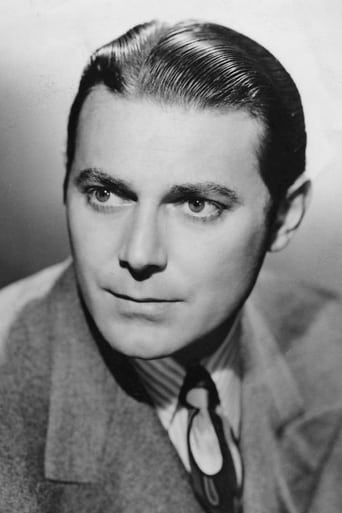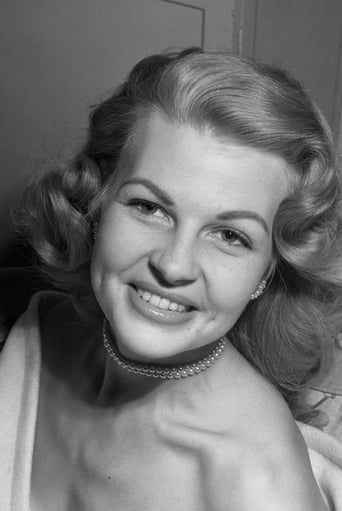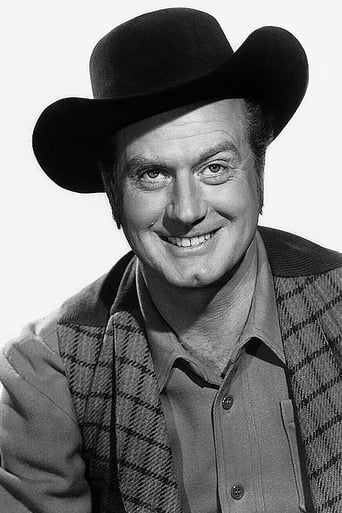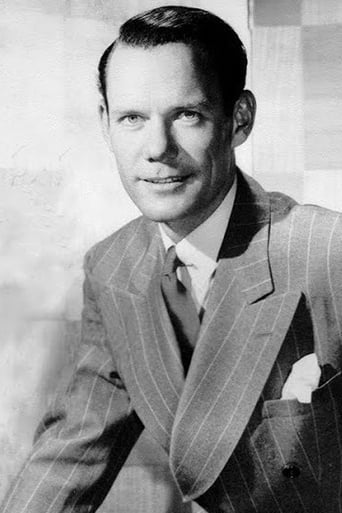bkoganbing
When Columbia released this Sam Katzman production Where The Redskins Rode in 1951 already folks were offended. By 1971 no one would have dared release a film with that title, let alone this day and age.Wouldst the title be the only thing wrong with this film. This is a story of romance in the Delaware Indians between the chief's son Jon Hall and princess Sherry Moreland. It's a rough rocky romance because there's a sly Mata Hari in the mix, a mixed race woman played by Mary Castle who lives above a tavern where no decent woman would and she's also a spy for the French.This little triangle is against the background of the Battle for Fort Necessity in which young Virginia planter named George Washington and his frontier guide Christopher Gist set and then lost to the French. This minor skirmish in America set off the global conflict known as the Seven Years War with battles between the British and French fought literally around the world. George Washington is played by James Seay and Gist by John Ridgely.To keep your Indian tribes straight the Delawares, Jon Hall's good Indians dressed like plains Indians and the French supporting Indians supported Mohawk haircuts as was their fashion. Hall's Indians also rode horses in fact he leads a cavalry charge in the climax. As this was a Sam Katzman production nothing in the budget went into research.When The Redskins Rode is offensive on so many levels, skip this one by folks.
Richard Chatten
'When the Redskins Rode' seems intended as a follow up to Sam Katzman's earlier Columbia release 'Last of the Redmen' (1947), which had also been set in the 1750s, starred Jon Hall and employed an exotic new colour process to detail a trek across what appears to be the same distinctive Californian terrain (the earlier film was the only feature ever made in a process called Vitacolor; while 'When the Redskins Rode' is in SuperCinecolor. It looks very attractive for the most part but - as the two previous writers have both already observed - produces distinctly blurry and inconsistent results in some of the location scenes).Set in 1753, the plot resembles many Japanese samurai films I've sat through in which high-level intrigue between rival shogunates is discussed at great and passionate length, punctuated with occasional pauses for a bit of large scale violent action. The two rival powers are here the British and the French; the former commanding the loyalty of American-Indian hero Jon Hall and 'Colonel' Washington, played by James Seay. The 18th century French uniforms occasionally used for target practice provide visual novelty, while Mary Castle and John Dehner as a pair of French spies and Gregory Gaye as Captain Saint-Pierre of Fort LeBoeuf are sneering villains worthy of an old war movie. (Considering how soon after the end of World War II this was made, it's rather startling to see the late Pedro de Cordoba as Chief Shingiss wearing a headband decorated with swastikas and upside-down hearts; while one of the goons sent to kill him blurts out that they were only following orders).
Brian Camp
WHEN THE REDSKINS RODE (1951) is set in Williamsburg, Virginia and adjacent regions in 1753 and takes its plot from an actual incident involving George Washington in the lead-up to the French-and-Indian War. This account was found on a website called George Washington's Mount Vernon:"Concerned by reports of French expansion into the Ohio Valley, Virginia Lt. Governor Robert Dinwiddie sent 21-year-old Major George Washington of the Virginia Regiment on a mission to confront the French forces. Washington was to deliver a message from the governor demanding that the French leave the region and halt their harassment of English traders. Washington departed Williamsburg, Virginia in October 1753 and made his way into the rugged trans- Appalachian region with Jacob Van Braam, a family friend and French speaker, and Christopher Gist, an Ohio company trader and guide. On December 11, 1753, amidst a raging snowstorm, Washington arrived and was politely received by Captain Jacques Legardeur de Saint-Pierre at Fort LeBoeuf. After reviewing Dinwiddie's letter, Legardeur de Saint-Pierre calmly wrote a reply stating that the French king's claim to the Ohio Valley was 'incontestable.'" The film does show Washington undertaking that mission for Governor Dinwiddie accompanied by Christopher Gist. And Captain Saint-Pierre at Fort LeBoeuf does indeed reject the English governor's demand. Everything else in the film has been highly embellished by the screenwriter in order to craft an efficient low-budget colonists-and-Indians action movie with good and bad Indian tribes, French spies, a femme fatale, an impossibly noble Indian hero, and a devoted Indian maiden in love with him. There are two major battles and a couple of skirmishes as well as a barroom brawl or two. Footage from a much bigger-budgeted movie about the French-and-Indian War, NORTHWEST PASSAGE (1940), is employed to spice up the action. In fact, Christopher Gist (John Ridgely) and his men are rather inappropriately dressed up like Rogers' Rangers from the earlier film so that the footage will match. He even suggests at one point that he and his men "wear green" in order to blend in with the forest, all the better to sneak up on the opposing Indians.The protagonist is Hannoc (Jon Hall), the "prince" of the Delaware tribe, whose father, Shingiss, the "king" of the tribe, is solicited by George Washington (James Seay) for help in opposing the French and their Indian allies, the Miamis and the Wyandottes (who look a lot like Mohawks). Frankly, I didn't know Indian tribes had kings. I thought they were chiefs. But I guess Shingiss got the same elevation in rank that the film gives Washington, who's been promoted to Colonel here. In any event, Shingiss has a headband adorned with reverse swastikas, an ancient symbol used in various ancient cultures, including the Hopi, who lived about 2000 miles from where this takes place. Hannoc is loved by his childhood sweetheart in the tribe, Morna (Sherry Moreland), but the poor guy, after getting educated by Washington and Gist in western ways, has been seduced by local Williamsburg beauty Elizabeth Leeds (Mary Castle), a spy for the French who has come on heavy to Hannoc in order to try and get the Delawares to stay neutral, making it easier for the French to push the English around. Miss Leeds has weakened Hannoc's resistance to loving a white woman by claiming she's half-Shawnee.Washington's portrayer, James Seay, was 15 years older than Washington was in 1753, but he gives a spirited performance and makes a credible future president, not yet the wax figure we see in so many more prestigious movies about the father of our country. John Ridgely, as the faux Rogers Ranger, is looser, more relaxed, and funnier than I've ever seen this actor before. Mary Castle (Frankie Adams in the excellent western series, "Stories of the Century") makes a suitably attractive temptation for the straight-arrow Indian hero, played rather stiffly and sluggishly by Jon Hall, who seemed more at home in the South Seas in THE HURRICANE (1937); in the medieval Middle East in ARABIAN NIGHTS (1942) and ALI BABA AND THE FORTY THIEVES (1944); and Ancient Egypt in SUDAN (1945). Of course, he had Dorothy Lamour or Maria Montez in those films and that might have brought out a distinct physicality in those performances. Also on hand are dependable character actors Pedro de Cordoba as the wise and judicious Indian leader and John Dehner as a French spy posing as a Brit. Producer Sam Katzman turned out a lot of low-budget historical adventures in the 1950s, many of them using footage culled from more expensive movies. This isn't the best film I've seen to tackle this particular era of history, but it's action-packed, laden with plot twists, and reasonably entertaining. I saw it on the Encore Western Channel earlier today, June 4, 2016, and the print shown, in a process advertised as "SUPERcineCOLOR," is remarkably inconsistent in its color values. The earlier review posted here, by John Seal, cites some of the problems with film stock and cinematography and I noticed the same things.
John Seal
From the prolific pen of screenwriter Robert E. Kent comes this colourful historical fantasy about George Washington's early days as a loyal British soldier. He's played stolidly by James Seay, who does his best under the circumstances. Washington is trying to forge an alliance with the Delaware Indian tribe against the French, who have lined up their own set of Native American militia in an effort to assert their authority over the Atlantic Seaboard. The aging Jon Hall, an expert at playing 'non-white' characters in earlier films such as The Hurricane (1937) and Arabian Nights (1942), is appallingly miscast as Prince Hannoc, the heir to the Delaware throne and a vital pawn in the British plans. When his arranged marriage to Indian maiden Morna (Sherry Moreland) falls through, Hannoc's father Shingis (Pedro de Cordoba, who gets the film's best lines and delivers the best acting) declares his neutrality, setting in motion the reasonably well realized action sequences that dominate the final half hour of the film. Produced by cheapskate producer Sam Katzman, When the Redskins Rode is ostensibly shot in SuperCineColor, which actually seems to consist of two distinctly different types of film stock. Most of the film is bright and sharp, but there are frequent scenes shot on what seems to be washed out film stock. Thanks to the wonders of SuperCineColor and the inability of DoP Lester White to adapt the lighting accordingly, the film also suffers from some of the worst day-for-night cinematography you'll ever see. Basically, scenes at night appear to have been shot in broad daylight with a few crickets overdubbed to add suitable night time ambiance.




